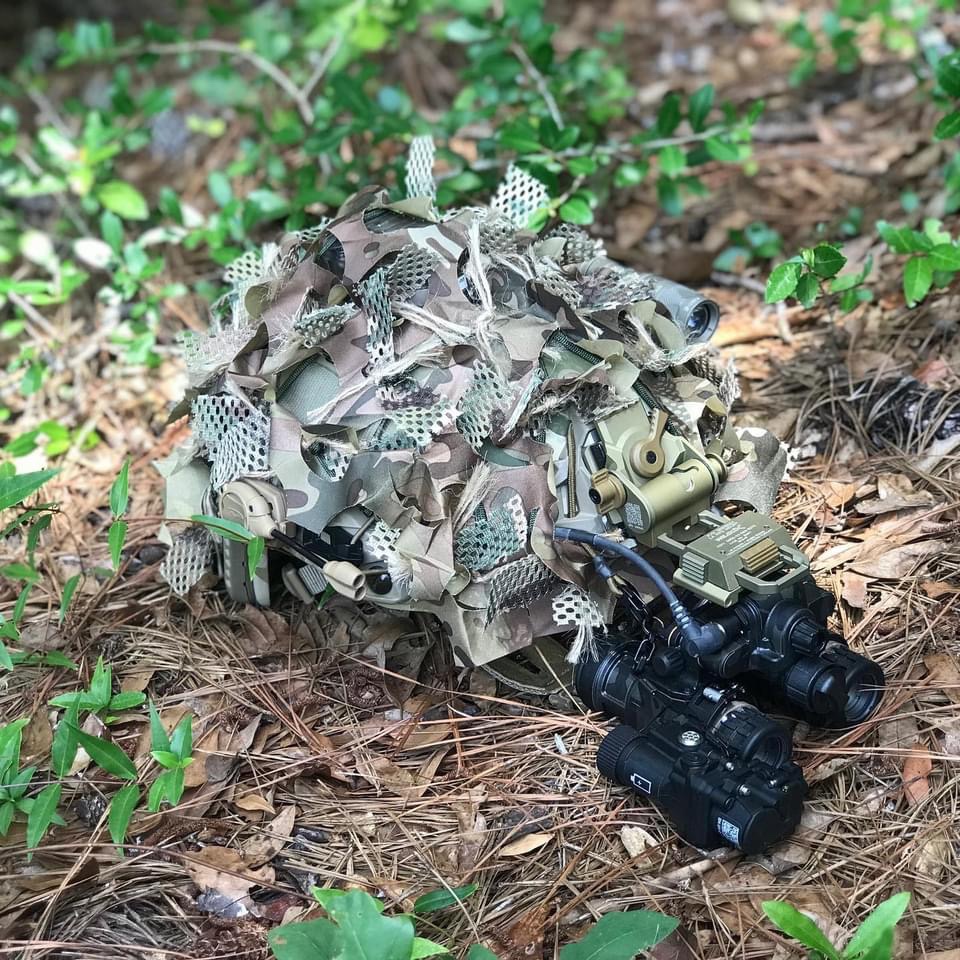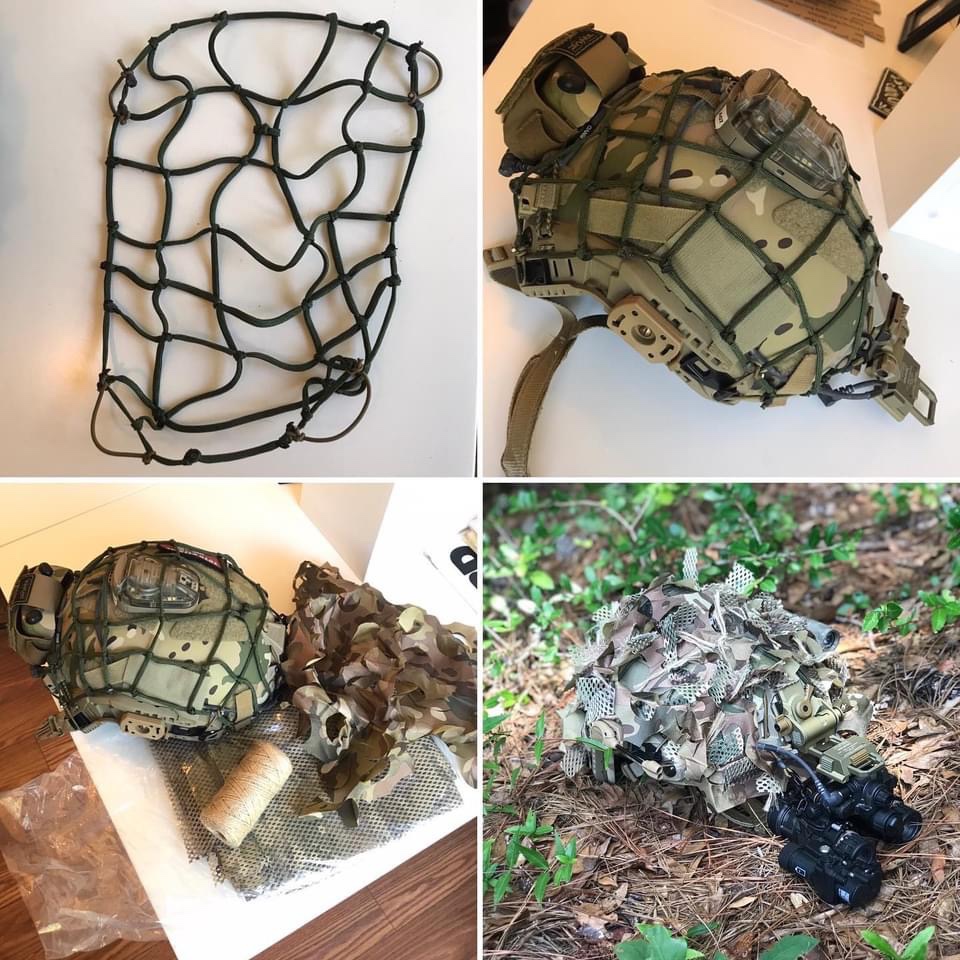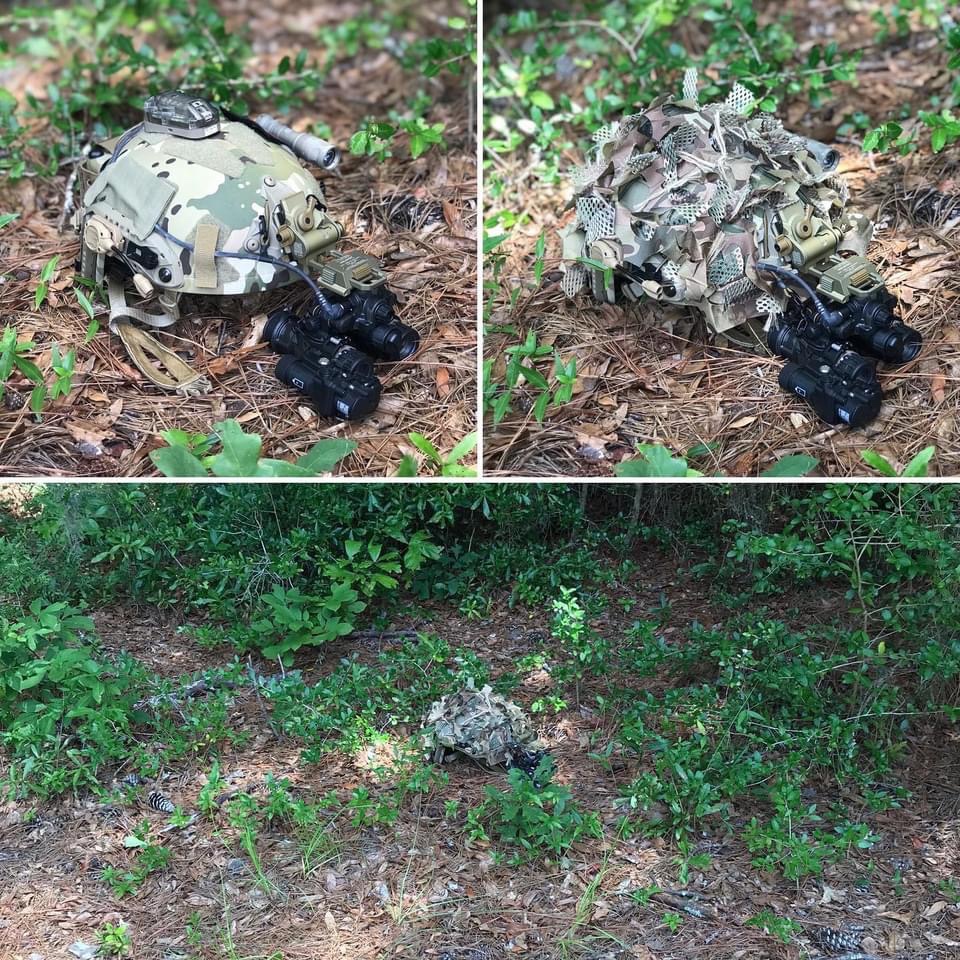TNVC’s Augee Kim recently shared his Helmet Assault Ghillie DIY project on social media. Here it is, in case you missed it.
Recent little project of mine that I’m calling the “Helmet Assault Ghillie,” or “HAG.”

Inspired by WWII-era “net” helmet covers, I wanted a quick and easy way to attach and remove camouflage scrim to a helmet, while still retaining full functionality of critical components like the helmet rails/rail-mounted accessories, Core Survival Hel-Star 6 IFF strobes, external power connectors, retention systems, etc.

The base is a 550 cord net secured to the helmet using shock cord and clipped on to the helmet clips included with the Ops-Core Step-In Visor (the kit actually includes all the needed clips—two long ones for Super High Cut configuration rails as well as two short ones for High Cut/XP configuration rails, I just installed both), to which I used jute twine to tie on manufactured camouflage net as well as cut strips of Multicam mesh material, but you could also tie or tuck any foliage, burlap, or other material to it as well.

The final product gives me full function (including being able to change batteries in the external battery pack by unhooking the back of the HAG) of all my helmet-mounted systems, while, in my opinion, effectively breaking up the outline of the helmet and providing effective (and matching—tacti-fashion is important too) additional camouflage that is non-permanent, and quick and easy to attach and remove.



I was at Ft. Campbell two weeks ago and was surprised to see a bunch of the 101st guys rocking helmets outfitted like this.
Getting back to “the basics”, kinda wonder what people’s take on it is- garrison/peace-time BS or legitimate training/ equipment deficiency being addressed.
Probably both. Less perceived usefulness for personal camouflage in OIEF/OEF, even though the mountains of Afghanistan had plenty of vegetation up to the tree lines.
I’d argue that this sort of mindset is important for the military, right alongside counter-UAV mitigation and EM mitigation.
Good point about the different wars and you could argue that the Pacific Shift could make it more important than even Afghanistan. The Marines seem to be looking at it as a whole signature management spectrum, I’m sure the Army is doing so as well.
Ha! They were probably Rakkasans. It’s called “Iron Hair”. We had to tie burlap strips to our helmet covers similar to what some 101st predecessors did in World War 2.
We were rocking this in B 3/187 back in 94-97 as well.
Cut up and use some strips from a Saab ULCANS Barracuda camo net for much better multispectral camouflage. Use strips from a desert and a woodland net to get the tone & brightness just right.
It takes about 3 layers of the netting to be invisible to a decent high resolution thermal scope like a Trijicon at close range i.e. 5-25 meters. A full body “Turkey hunters suit” is surprising light weight and very well ventilated due to the netting construction.
If you know the two magic words to search for it’s easy to find the surplus nets online. 😉
And those two magic words would be?
Matt
History repeats itself? / what’s old is new?
WWII, ragtops out of Fort Ord (7th I.D. 80s)
I’m sure there are plenty of others out there.
Yeah, World War Two.
In addition to WWII, the cabbage patch helmet from the 7th DriveBy
We’ve at pieces of cammie nets on our helmets for the last 5 years or so. Compared to a plain helmet cover or god forbid a bare Ops-Core it is night and day.
Ha what is Old is New again. We did this in the 7th (L)